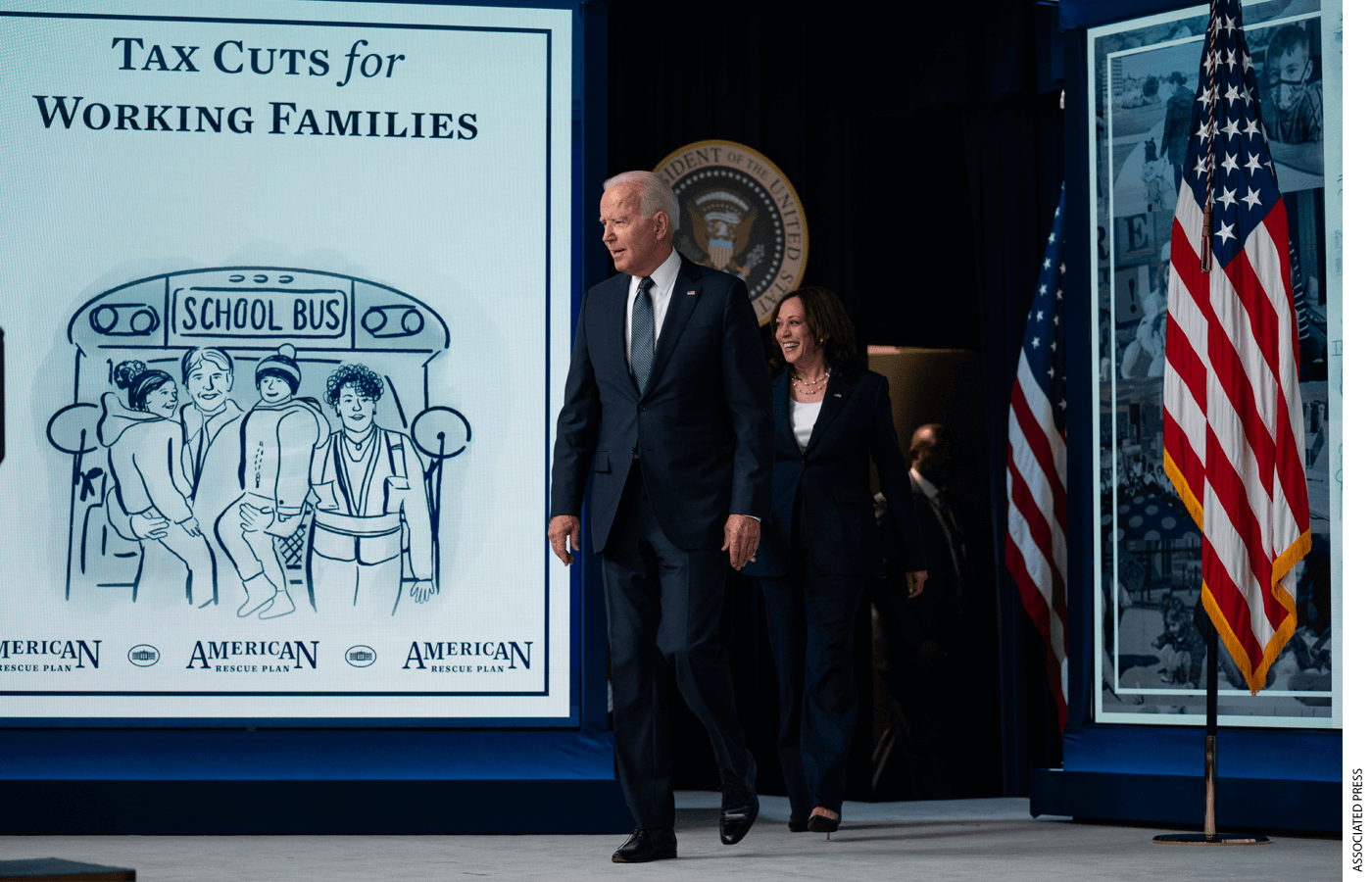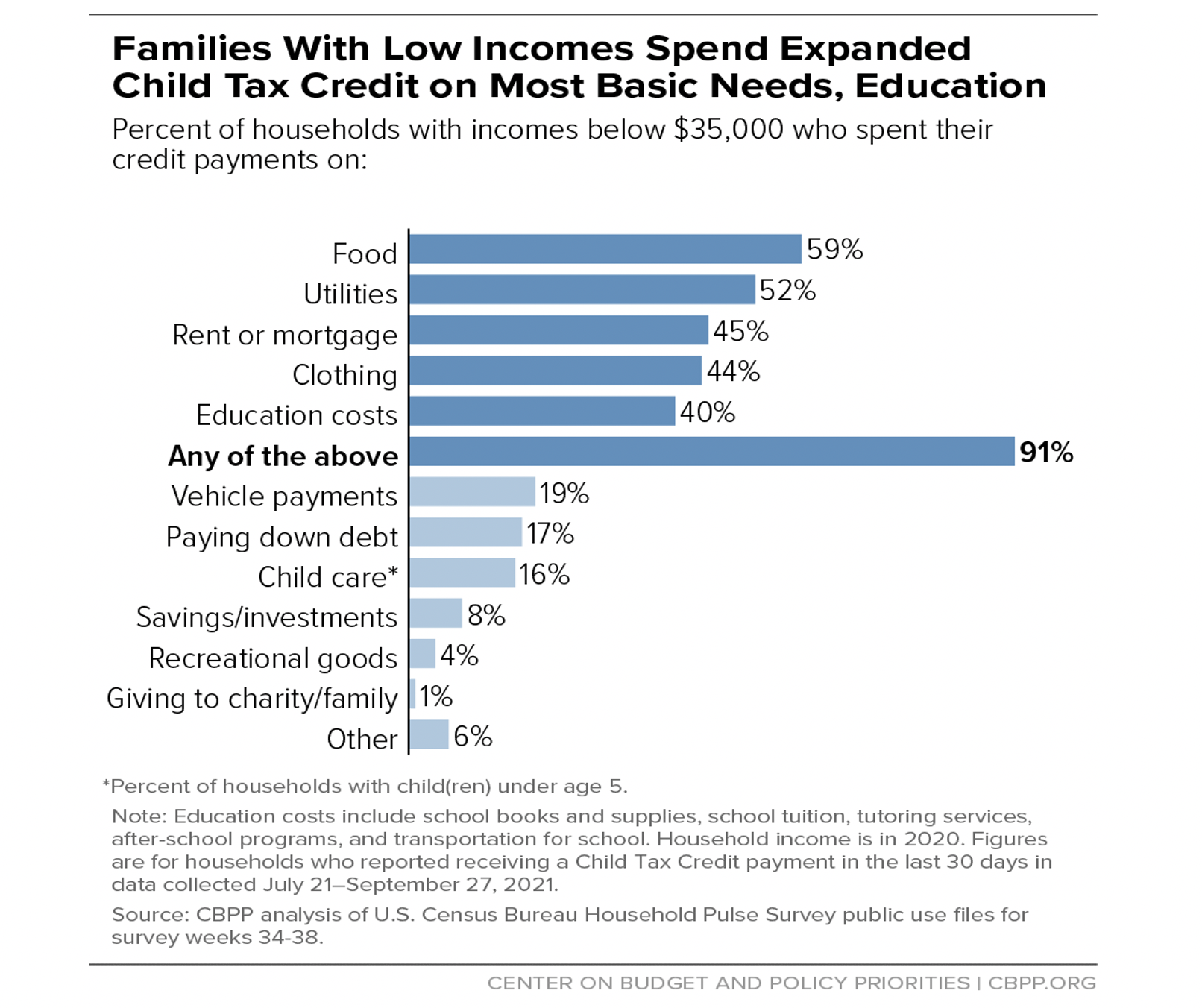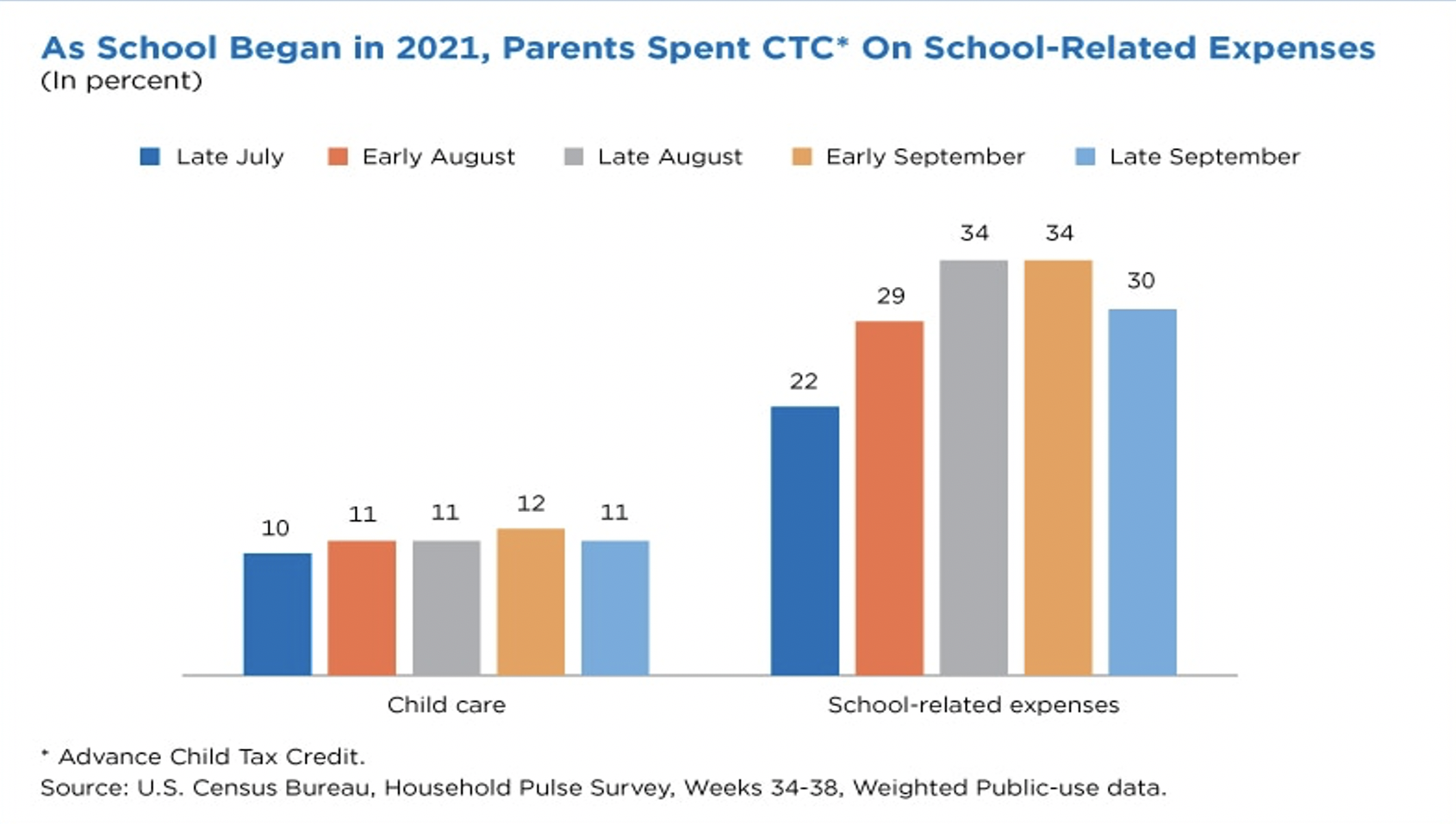
The American Rescue Plan Act of March 2021 expanded the Child Tax Credit for tax year 2021, resulting in more families receiving an increased monthly payment for each child they have, ranging from $250 to $300 a month, based on family income and child age.
Families can use their payments for any number of purposes—e.g., paying for food, debt, housing or even putting the money into a savings account. So it’s particularly interesting to learn that many parents or caregivers are choosing to invest in their children’s education. A Center on Budget and Policy Priorities analysis of Census Bureau data collected in July, August, and September 2021, as the school year approached, found 40 percent of low income families (defined as making less than $35,000 per year) using payments for education costs covering books and supplies, tuition, after-school programs, and transportation for school.

Some of these expenses may be for adults’ own education, as about 5 percent of adults in low-income households with children are enrolled in school, other Census data show.
Data were collected over five weeks from July 21 to September 27 using the Census Bureau’s Household Pulse Survey, sent to more than 1 million adults every two weeks. It provides near real-time data on how the pandemic is affecting Americans’ lives.
How does the credit work?
Anyone living in the U.S. earning less than $75,000 as a single person or $150,000 filing taxes with a spouse, receives $300 monthly for every child under six years old or $250 monthly for every child six or older, totaling $3,600 a year for every child under six and $3,000 a year for every child six and older.
Those making more than $75,000 as a single person or more than $150,00 filing taxes with a spouse get less money.
The child must be 17 years-old or younger as of December 31, 2021, be claimed on an individual’s taxes as a dependent, have lived with the claimant for at least half of 2021, and have a social security number.
Monthly payments are sent between July 2021 and December 2021, with the balance of the credit received when filing 2021 taxes.
The money can be used by parents in any way that meets their needs.
According to the IRS, about 35 million eligible families are receiving the advance payments.
Adults at all income levels reporting that they received a child-tax-credit payment were asked a question about how they had spent the money, allowing multiple choices from rent to groceries. A majority of respondents reported spending their dollars on more than one thing.
Several choices were school-related expenses, including books and supplies, tuition, tutoring services, after-school programs (other than tutoring and child care) and transportation to or from school.
Three in 10 families overall receiving the first three monthly payments (July to September) reported spending them on school expenses, with one in four families with young children using them for child care costs, according to the Census Bureau.
About 1 in 10 households reported using the child tax credit to help pay for child care.

The pattern of spending varied by the child’s age.
“Families with at least one school-age child were more likely to spend the CTC on school expenses than families with only children under 5 years old,” the Census Bureau said. “But families that only had young children were much more likely to spend it on child care—one in five in late July and one in four from early August to late September.”
The increase “may be linked to the beginning of the school year and parents’ work,” the Census Bureau said.
There was no difference between the shares of households that spent their tax credit on school expenses in late August and early September. By late September, adults in households that received the child tax credit were less likely to spend part of it on school-related expenses than early in the month.
Non-Hispanic Black and Hispanic families reported using the child tax credit for school expenses “in much higher proportions than non-Hispanic White households,” the census said. “By late September, an estimated 4 in 10 Black families (42 percent) and 3 in 10 Hispanic families (31 percent) used the CTC for school expenses, compared to about 1 in 4 non-Hispanic White families (26 percent).”
According to the Center on Budget and Policy Priorities analysis, the finding that some not insignificant portion of CTC payments are used to cover education costs are consistent with evidence from Canada, where parents—particularly those with low incomes—spend their child allowances on essentials and education expenses.
Finally, a caution. These data are suggestive, not definitive. They rely on what the roughly 6 percent of people who responded to the government survey chose to tell the government about how they spent the money. The data collection was at the start of the school year, and the survey asked about a limited number of spending options. It’s early in a family spending process that will last at least one tax year—perhaps longer depending upon current Congressional negotiations on President Biden’s spending proposals. We should not rush to any final conclusions regarding longer term patterns of parental spending of federal cash assistance.
Even with all those important caveats, however, what the data suggest is potentially of great significance for education. An explicit proposal to channel an additional $60 billion a year in federal spending to households earning up to $150,000 a year to use for K-12 tuition, tutoring, and after-school programs might have met fierce resistance from both political parties for well-known reasons. Yet if the Census data and the Center on Budget and Policy Priorities analysis is to be believed, a similar result is being obtained through the expanded child tax credit. The press and education policy establishment perhaps haven’t fully realized it yet. What the Census data suggest, though, is that parents seeing money in their bank accounts sure are figuring it out.
Bruno V. Manno is Senior Advisor for the Walton Family Foundation’s K-12 Program.
Additional Education Next coverage of the child tax credit:
“How a Turbocharged Child Tax Credit Could Electrify School Choice,” Frederick Hess, Fall 2021
“Should Congress Make the Expanded Child Tax Credit Permanent?” Forum, Fall 2021


